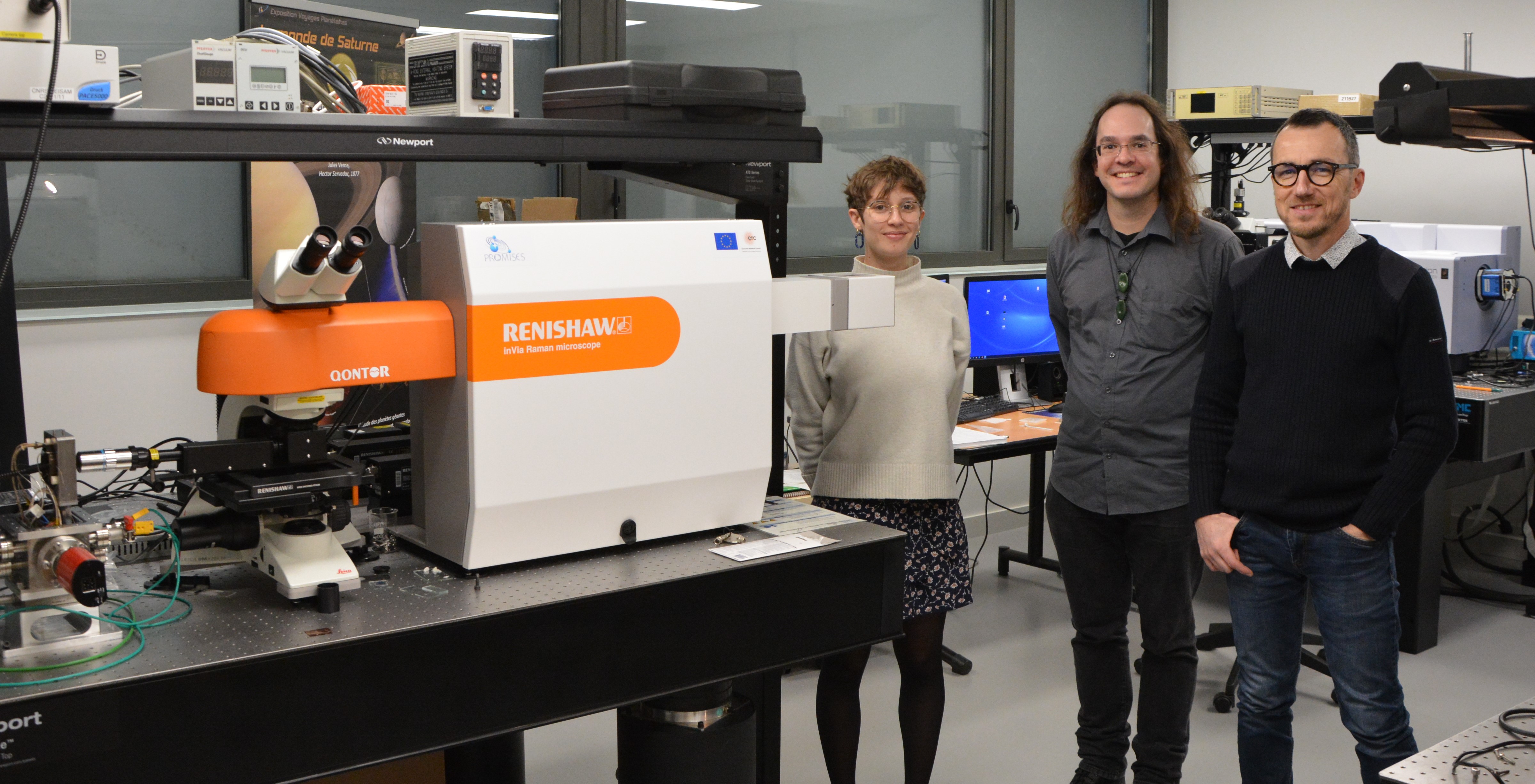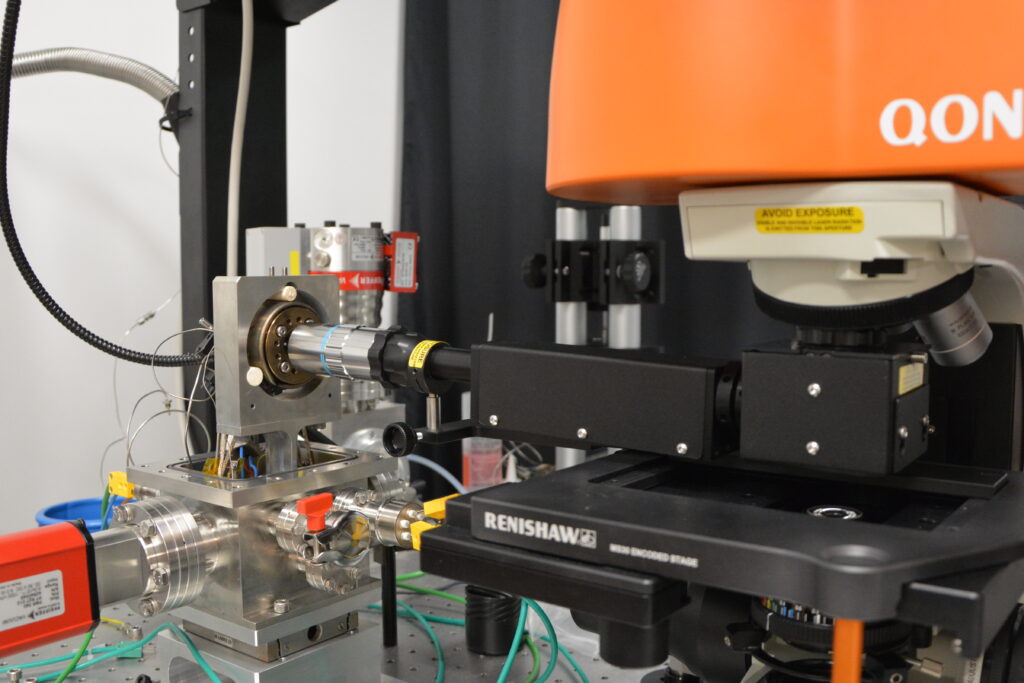A Raman spectrometer to study complex organic matter

The Promises project aims to understand the role of complex organic matter interacting with water and high-pressure rocks in the conditions of the icy moons of Jupiter and Saturn.
To answer this question experimentally, the LPG conducts experiments at high pressure (7 GPA) and high temperature (800 K) in diamond anvil cells. These optical (transparent) cells enable samples to be observed during experiments. In this way, sample reactions and evolution, such as gas production or phase changes, can be accessed by optical diagnostics such as Raman spectroscopy.

The LPG has therefore acquired a state-of-the-art Raman spectrometer. Equipped with 3 laser sources (355, 405, 515 nm) and several diffraction gratings, the equipment covers the near UV-Visible spectral range. Its large numerical aperture makes it a very bright system, enabling laser power and acquisition times to be kept to a minimum, thus protecting the sample from any laser-related damage.
During these experiments, the anvil cells are subjected to high temperatures. To preserve the optical components and provide adequate space for the cell heating system, the LPG’s Raman spectrometer has been equipped with an optical arm dedicated to beam offset. The beam is oriented parallel to the sample stage, and targets the vertically-mounted cell. In this configuration, the samples are potentially sensitive to gravity, enabling us to observe interesting new arrangements in the reactions of matter subjected to different pressure and temperature conditions.

Initial experimental results are extremely encouraging, with observations of the production of gases such as carbon dioxide and methane. Experiments on large-scale instruments (Synchrotron, FTICR) are underway to consolidate the interpretation of these results in the context of the Solar System’s ice moons.
PUBLISHED ON FEBRUARY 20TH, 2024

